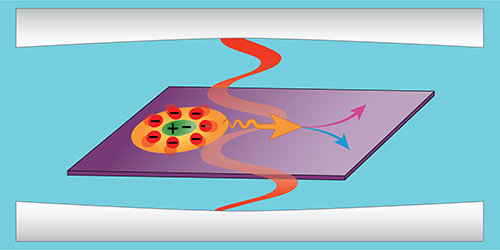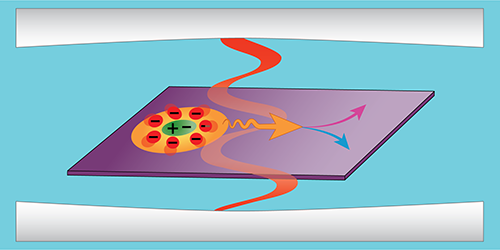Hybridized Photons Feel Electric Fields
Optical computers could be faster than the electronic ones we have today. But a roadblock has been that, unlike electrons, photons can’t be manipulated using electric and magnetic fields. Now, Thibault Chervy, Patrick Knüppel, and colleagues, at the Swiss Federal Institute of Technology (ETH) in Zurich, have brought optical information processing a step closer. They demonstrated that photons can be propelled with fields if the particles are bundled with electronic excitations to form composite particles called polaron-polaritons.
The team generated polaron-polaritons by shining a laser onto a quantum well (QW) consisting of a 20-nm-thick film of gallium arsenide. Mirrors above and below the QW formed an optical cavity in which the laser photons bounced back and forth. As they propagated through the QW, the photons excited electrons, producing electron-hole pairs that absorbed and reemitted the photons repeatedly. Such interactions constitute quasiparticles called exciton-polaritons, but they are largely insensitive to electric and magnetic fields. When the ETH team flooded the QW with a “gas” of free electrons, however, the exciton-polaritons accumulated clouds of charge-density fluctuations about themselves, forming the field-sensitive polaron-polaritons.
The team studied the properties of these polaron-polaritons by applying a magnetic field perpendicular to the QW and a voltage across its length. The resulting electron density gradient propelled the polaron-polaritons along curved paths through the QW. This motion was revealed in the distribution of photons emitted as the quasiparticles decayed. When the team increased the strength of the magnetic field, the system entered a regime in which the polaron-polaritons’ paths curved either one way or the other depending on their spin. The researchers suggest that this might lead to applications for polaron-polaritons in future spintronic devices.
This research is published in Physical Review X.
–Marric Stephens
Marric Stephens is a freelance science writer based in Bristol, UK.





